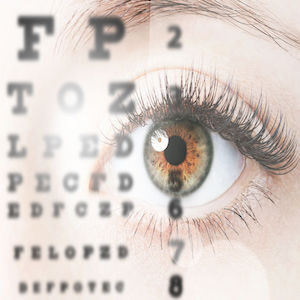By Dr. Ken Broda Bahm:

“Seeing is believing,” and based on the social science, we tend to apply that adage even when the visual aid does not rationally add to the substantive proof. Visuals makes things easier to call to mind later (which makes them feel more true), while also making the idea more vivid, more concrete, and easier to comprehend. For trial lawyers, sometimes what is visual can play second fiddle to what is in documents and testimony. And sometimes, among the visuals, what is offered for illustrative or demonstrative use can often play second fiddle to what is offered as evidence. But viewers — jurors, for example — don’t seem to draw those distinctions.
While research on the specific effects of visuals in a legal context has been relatively sparse, the studies that have been done support the conclusion that they are generally useful to jurors and effective in persuasion. In a recent study (Park & Feigenson, 2021), Jaihyun Park and Neal Feigenson of Baruch College and Quinnipiac University Law School, respectively, conducted an experiment on the use of visual evidence to support a patient’s medical malpractice claim. In this case, they used a visual simulation showing what the world looked like to someone with a visual injury. Their conclusion is that it works: Those who saw the visuals awarded more in pain and suffering damages than those who did not. It also works for a good reason — because it led jurors to conclude that the injury severity was greater. Finally, they found that it may not matter whether it is offered as evidence or not, since it generally worked when both the visual was identified as evidence and when it was offered as merely illustrative of testimony. In this post, I will break out those conclusions and their implications for the choice to show, and not just tell, when it comes to damages.
Visualizing Drives Damages for Reasons That Are Rational, Not Emotional
The result was consistent: Across three studies, those who saw the visual support awarded more in pain and suffering damages to the plaintiff. In addition to the net effect, however, researchers also measured the mock jurors emotional response to the imagery. You might suspect that visuals might work by playing on feelings or sympathy, but the researchers found that emotional response played no significant role. This is actually in line with past research showing that the role of emotional effects from visuals seems to be limited to gruesome visuals, which tend to increase criminal guilty verdicts, but don’t have an effect on civil liability verdicts or damages. Instead of playing on jurors’ feelings, visuals, according to the current study, increased damages in the most legally-appropriate way: by convincing jurors that the perceived injury was more severe.
Evidentiary Visuals Are More Credible Than Illustrative Visuals
The study also included the interesting element of varying the explicit purpose of the visuals. For some, it was offered as evidence — imagery with independent probative value on the question of the plaintiff’s degree of injury. For others, it was offered for illustrative (or demonstrative) purposes, meaning that it should only supplement or help to explain testimony, which is the true source of probative evidence. But for both groups, the visuals and the testimony remained constant, only the label changed.
The label does matter, it turns out. When the visuals were identified as evidence, jurors considered them to be:
- More accurate
- A better representation of the impairment
- A tool that better enabled them to see the injury from the plaintiff’s point of view
Status as Evidentiary or Illustrative Doesn’t Generally Influence Damages
The kicker is that, despite these differences in the stated credibility of the visuals when identified as either evidence or illustration, the label for the visual did not tend to mediate the level of damages that the mock jurors awarded. In two of the three conditions, and when the data was aggregated across the three studies, there was no significant difference based on the identified purpose of the visual. This is consistent with the idea that jurors don’t necessarily understand instructions, and tend to resist using information for one purpose, but not another. Interestingly, they understood the legal instruction well enough to consider the evidentiary condition to be more credible, but they used the visuals to buttress damages at the same level, whether those visuals were evidentiary or merely illustrative.
The authors concluded, “The distinction between illustrative and substantive images did not, on the whole, significantly affect participants’ damages awards for the plaintiff’s pain and suffering.” “What appears to matter most is whether demonstratives are used at all, not whether they are admitted as substantive rather than illustrative evidence.”
While this study focused on the use of visuals by a plaintiff, it would seem to support the use of graphics by either party based on the reasons for its effectiveness. So the implication for all parties is, if you can visualize it, then do it.
___
______
Other Posts on Courtroom Visuals:
- Use Charts (Even If the Need Seems Trivial)
- Learn Visual Storytelling from the Second Impeachment Trial’s “Day in the Life” Video
- Use Physical Exhibits: Be 3-D
Park, J., & Feigenson, N. R. (2021). Picturing pain and suffering: Effects of demonstrative evidence, instructions, and plaintiff credibility on mock jurors’ damage awards. Applied Cognitive Psychology.